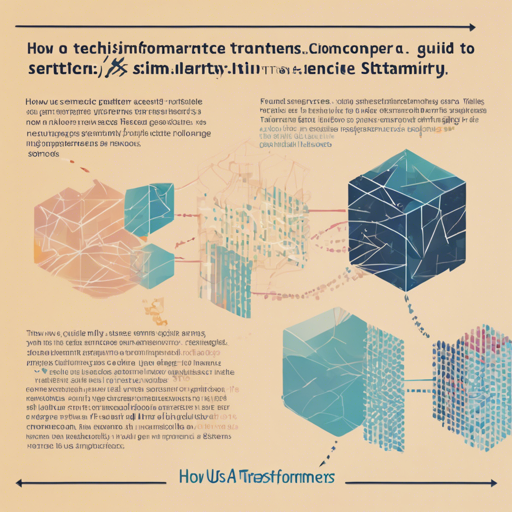In the realm of Natural Language Processing (NLP), sentence-transformers have revolutionized how we deal with text data. With the sentence-transformers library, we can easily transform sentences into vector representations for various applications. In this article, we’ll be focusing on the sentence-t5-large model and how you can use it for sentence similarity tasks.
What is the Sentence-T5-Large Model?
The sentence-t5-large model is a cutting-edge implementation of the sentence-transformers library. Think of it as a translator that can convert sentences and paragraphs into a 768-dimensional dense vector space. While it excels in measuring the similarity between sentences, it may not perform as well in semantic search tasks.
To further illustrate, picture a library where each book represents a sentence. The model creates a map of the library, linking books with similar themes or content. However, if you’re trying to find a specific book based solely on a vague description, this map might not lead you directly to your target.
Getting Started with the Sentence-Transformers Model
Before diving into coding, make sure you have the sentence-transformers library installed. Use the following command:
pip install -U sentence-transformersUsing the Model
Once you have installed the library, you can use the model with just a few lines of code. Below is an example of how to encode your sentences:
from sentence_transformers import SentenceTransformer
sentences = ["This is an example sentence", "Each sentence is converted"]
model = SentenceTransformer('sentence-transformers/sentence-t5-large')
embeddings = model.encode(sentences)
print(embeddings)In this snippet, we start by importing the necessary library and preparing our sentences. The encoding process converts the sentences into their respective embeddings, making them ready for comparison.
Requirements
Ensure you are using sentence-transformers version 2.2.0 or newer for optimal performance with this model.
Evaluating Model Performance
For those curious about how this model stands up to the competition, check out the Sentence Embeddings Benchmark, where you can see how sentence-t5-large performs against other models.
Sentence Embeddings BenchmarkTroubleshooting Guide
If you encounter issues while using the sentence-transformers library or the sentence-t5-large model, consider the following troubleshooting tips:
- Ensure your Python environment is correctly set up and is compatible with the sentence-transformers library.
- Double-check that you have installed version 2.2.0 or newer.
- If you experience errors related to TensorFlow or PyTorch, confirm that those libraries are properly installed and compatible with your system.
- Review any error messages for clues—sometimes they can point directly to the source of the issue.
For more insights, updates, or to collaborate on AI development projects, stay connected with fxis.ai.
Conclusion
At fxis.ai, we believe that such advancements are crucial for the future of AI, as they enable more comprehensive and effective solutions. Our team is continually exploring new methodologies to push the envelope in artificial intelligence, ensuring that our clients benefit from the latest technological innovations.

